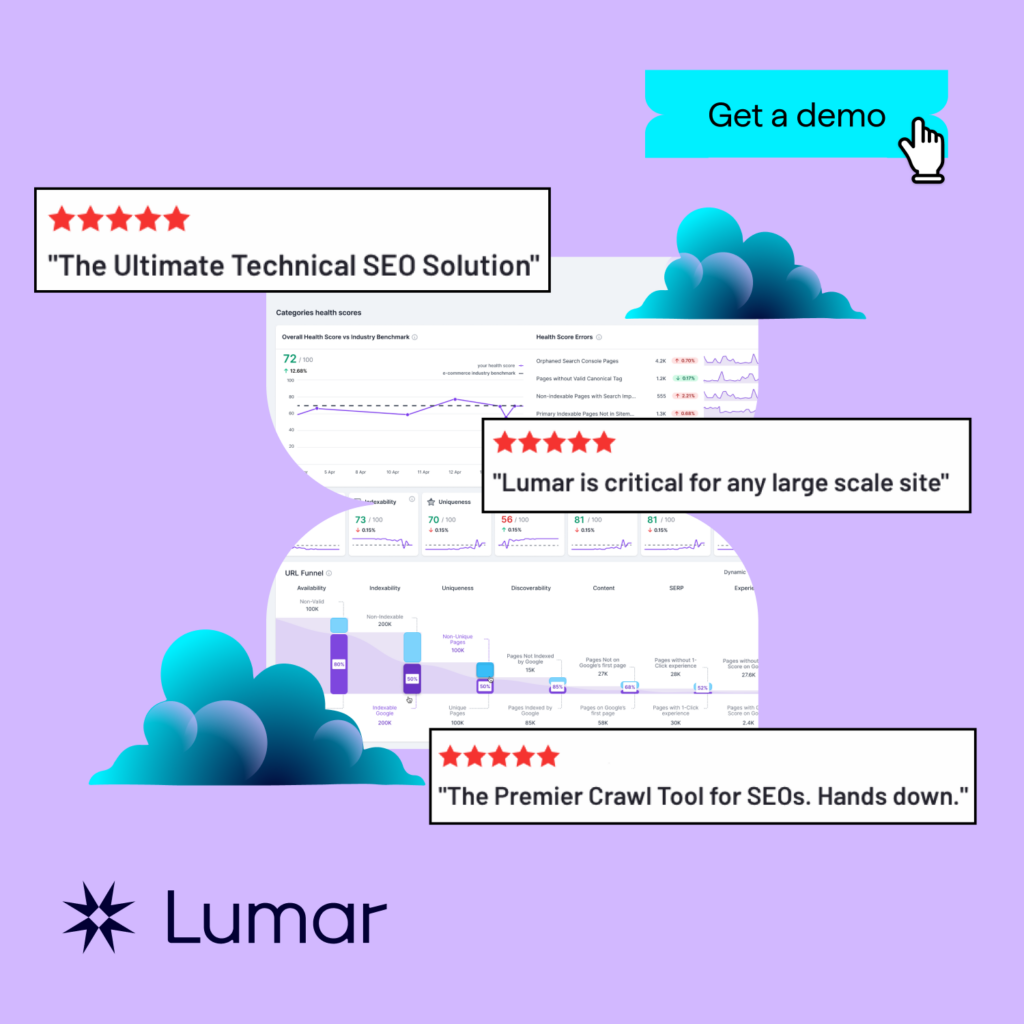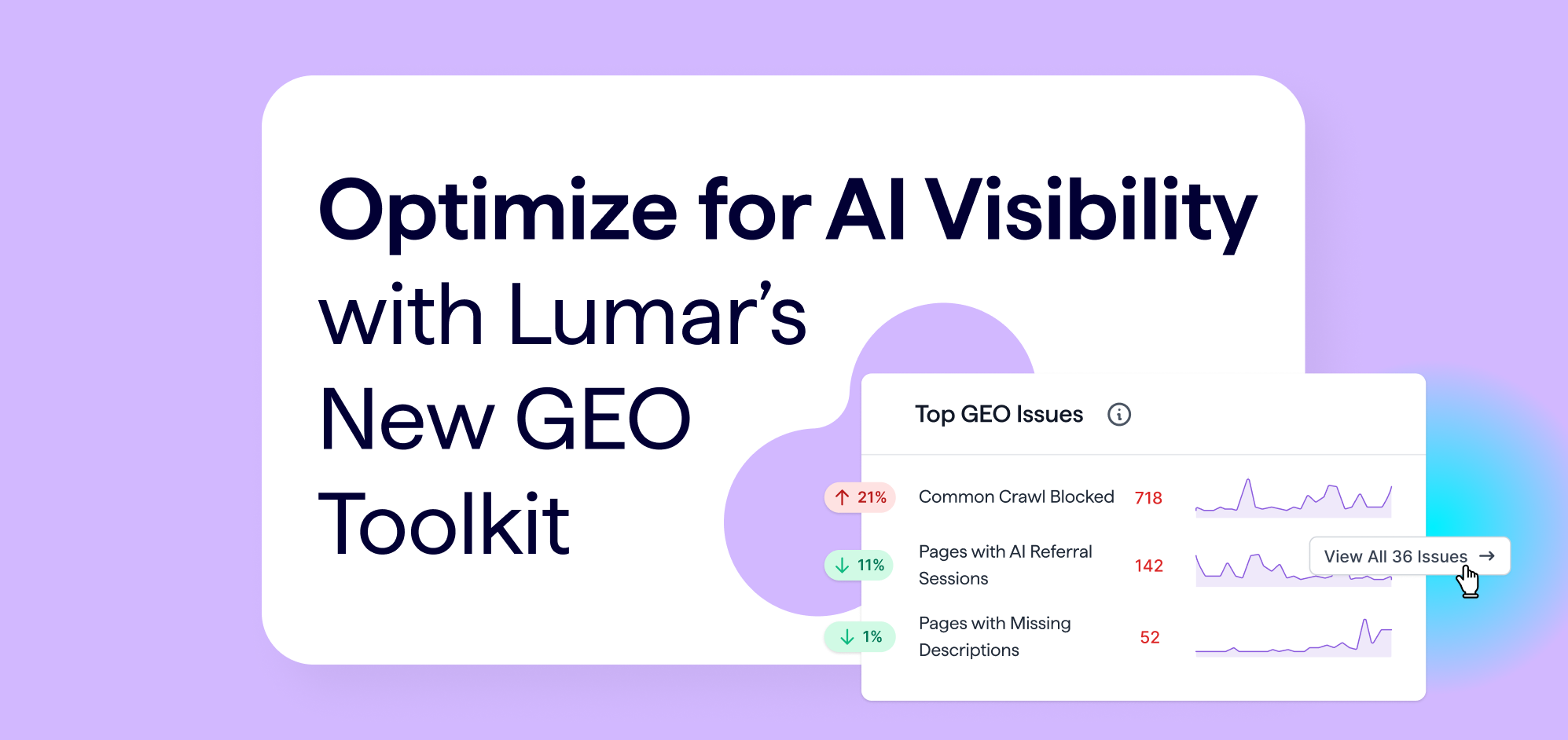How your website content renders impacts your SEO performance… Learn rendering best practices for better website optimization and search engine rankings in this episode of Lumar’s Human-First Digital podcast.
Recorded at BrightonSEO, Chris Spann (Senior Tech SEO, Lumar) is joined by Mark Stanford-Janes, Senior Organic Performance Manager at ROAST. Their discussion delves into the intricate world of rendering and its pivotal role in SEO.
Mark and Chris explore common rendering issues, particularly the challenges posed by JavaScript and dynamic content, and emphasize the importance of understanding web fundamentals for technical SEO success. Mark also introduces the concept of “islands rendering,” a component-based approach to web architecture and rendering.
Listen to the full interview below (or on your favorite podcast app!).
Listen & subscribe to Lumar’s Human-First Digital Podcast
(Don’t forget to subscribe to the Human-First Digital podcast on Spotify — or your podcast player of choice — to stay up-to-date with the latest insights and news from the world of SEO and website optimization and be the first to know when a new episode is released.)
Episode timestamps
- 00:00:11 – Introduction to Human-First Digital
- 00:02:06 – Why Rendering Matters in SEO and Common JavaScript Rendering Issues
- 00:08:43 – Learning About Rendering
- 00:13:04 – Innovations in Rendering Techniques
- 00:13:35 – Evaluating Server-Side vs. Client-Side Rendering
- 00:14:35 — Resource Costs of Rendering
- 00:15:13 – Closing Thoughts & Lumar’s SEO and Website Optimization Platform
“Having an understanding of fundamentals — how the web works — makes you a better technical SEO.”
— Chris Spann, Host of Lumar’s Human-First Digital Podcast
MARK STANFORD-JANES: Knowing how it works is always the first step to solving problems.
I think a lot of clients and customers and websites all have problems with rendering because everyone uses JavaScript. But no one uses JavaScript properly to get it to actually connect, get read by Google, get indexed properly. So I think rendering is always a good starting point because crawlability is like the number one thing to get right if [JavaScript] is on your site.”
CHRIS SPANN: What sort of problems does rendering cause?
Some people will be like, surely it’s fine, right? If a person can see it, Google can too, right? (Which isn’t always the case!)
MARK STANFORD-JANES: So the most common one is anything that’s populated by JavaScript, basically. If, for some reason, you have all of your on-page copy pulled in by JavaScript, that’s not necessarily going to render the first time through Google. Google won’t necessarily pick that up. It might pick it up at a later stage, but if you’ve got a new page launching [with JavaScript-loaded page copy], it’s not going to get properly indexed [by search engines] for a while. That’s gnerally the main issue that I always see.
And other issues, like links, your top navigation… There’s always a problem when someone is like, “oh yeah, we want a really massive, dynamic menu.” That’s great, but can it actually be seen? Does it work [from search engines’ viewpoint] without me clicking on it?
CHRIS SPANN: A thing that we see with a few clients, and this tends to be on really, really big websites, is that they cache a lot of things and things like that. But for some reason, there’s some set of rules somewhere that means that Googlebot doesn’t necessarily get different content — or shouldn’t get different content — but stuff for Googlebot might be coming from a different server, different place. It’s dealt with by a different box or whatever. And now, all of a sudden, [what people can see on a page and what Google can see on a page] gets out of sync.
And this is where I think it gets tricky for a lot of people to understand. It’s fascinating because most humans never see that stuff that’s sort of hidden away.
>> Listen to Chris and Mark’s full conversation in the podcast episode above.
About Human-First Digital (HFD)
In this podcast series, website optimization expert Chris Spann (Senior Technical SEO at Lumar) speaks to the brightest minds in the world of SEO and websites. The HFD podcast is brought to you by Lumar.
Ready to take your website to the next level? Explore Lumar’s full website optimization platform and our suite of SEO, web accessibility, and site speed tools.
Connect with this episode’s speakers
- Guest: Mark Stanford-Janes, Senior Organic Performance Manager, ROAST
- Host: Chris Spann, Senior Technical SEO, Lumar







